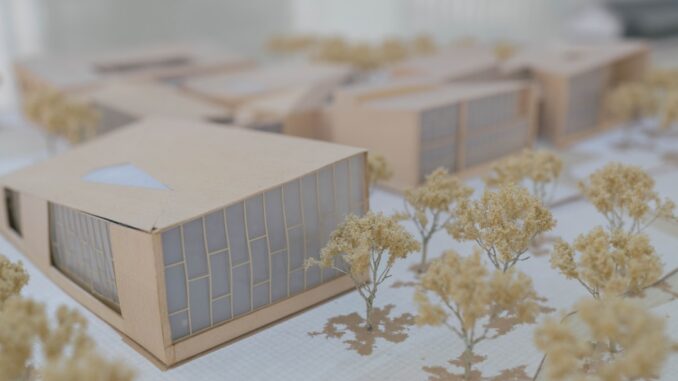
Embarking on a building project in London? The city’s planning regulations can be a labyrinth, but with the right guidance, you can navigate them smoothly. Here’s how:
1. Engage Early with Planning Authorities
Before diving into designs, consult with your local planning authority. This proactive step can shed light on potential challenges and specific requirements for your project. Many boroughs offer pre-application advice, which can be invaluable in smoothing the later stages of your application. (salstanarchitects.co.uk)
2. Understand and Comply with Local Policies
Each London borough has its own set of planning policies. Familiarizing yourself with these can significantly impact your application’s success. Ensure your design aligns with both national and local guidelines, addressing aspects like building height, materials, and environmental considerations. (urbanistarchitecture.co.uk)
Focus360 Energy: property compliance services – pre-planning to post-construction. Learn more.
3. Prioritize High-Quality Design
A well-thought-out design can make all the difference. Good design should always include appropriate scaling and a smart layout, and should strive to protect and enhance the character of our environment. Investing in quality design not only meets regulatory standards but also adds value to your property. (urbanistarchitecture.co.uk)
4. Prepare Detailed and Accurate Documentation
Your application should include detailed drawings, a design and access statement, and any necessary reports, such as a heritage statement or a transport assessment. Meticulous documentation ensures clarity and demonstrates your commitment to the project. (planningbee.co.uk)
5. Engage with the Local Community
Before submitting your application, consider speaking with neighbors and community groups to gain their support for your project. This can help address any concerns they may have and increase your chances of obtaining planning permission. (planningbee.co.uk)
6. Hire Professionals with Local Expertise
Navigating the planning permission process can be challenging, and hiring a professional with local experience can significantly streamline the approval process. An experienced architect or planning consultant can guide you through the process, help you understand the relevant policy, and liaise with the local planning department on your behalf. (planningbee.co.uk)
7. Be Prepared to Adapt Your Plans
Flexibility is key. Be prepared to modify your plans in response to feedback or objections raised during the consultation phase. This adaptability can demonstrate your commitment to the community and increase the likelihood of approval. (mroltd.com)
8. Understand Conservation Areas and Listed Buildings
If your property is in a conservation area or is a listed building, additional regulations apply. Ensure your design respects the historical and architectural significance of the site. Consulting with conservation officers and adhering to specific guidelines is crucial in these cases. (detailed-planning.co.uk)
9. Stay Informed About Policy Changes
London’s planning landscape is continually evolving. Staying updated on emerging policies, especially those related to sustainability and heritage, can help future-proof your development. Engaging with planning consultations and subscribing to local authority newsletters can keep you informed. (zeropointone.co.uk)
10. Allow Realistic Timeframes
The planning process can be time-consuming. Allowing realistic timeframes for the entire process ensures you can address any issues that arise without unnecessary stress. Patience and thoroughness often lead to the best outcomes. (convert-construction.com)
By following these steps, you’ll be better equipped to navigate London’s planning laws and bring your building project to fruition. Remember, thorough preparation and a collaborative approach are your best allies in this journey.


Regarding engaging with the local community, what strategies have proven most effective in addressing concerns about projects that might alter neighborhood character?
That’s a great question! Proactive communication is key. Holding open meetings, distributing project information through local newsletters, and creating visualisations that show how the project will integrate into the existing streetscape can be really effective. What strategies have you seen work well?
Editor: FocusNews.Uk
Thank you to our Sponsor Focus 360 Energy
The point about engaging with planning authorities early is critical. Do you find that projects which incorporate sustainability from the outset, in line with emerging policies, tend to have a smoother path through the planning process?
Absolutely! It’s great you brought up sustainability. We’ve seen that projects which proactively address environmental concerns, and align with borough-level sustainability targets often experience reduced objections from both the planning authorities and local residents. Has anyone else noticed this trend?
Editor: FocusNews.Uk
Thank you to our Sponsor Focus 360 Energy
The emphasis on high-quality design is key. Beyond aesthetics, how do you see innovative design contributing to the long-term resilience and adaptability of buildings within London’s evolving urban context?
That’s a brilliant point! Innovative design really goes beyond just looks. Thinking about modular construction or adaptable interior spaces, for example, can ensure buildings can evolve with changing needs and even be repurposed in the future. This is so important for urban resilience.
Editor: FocusNews.Uk
Thank you to our Sponsor Focus 360 Energy